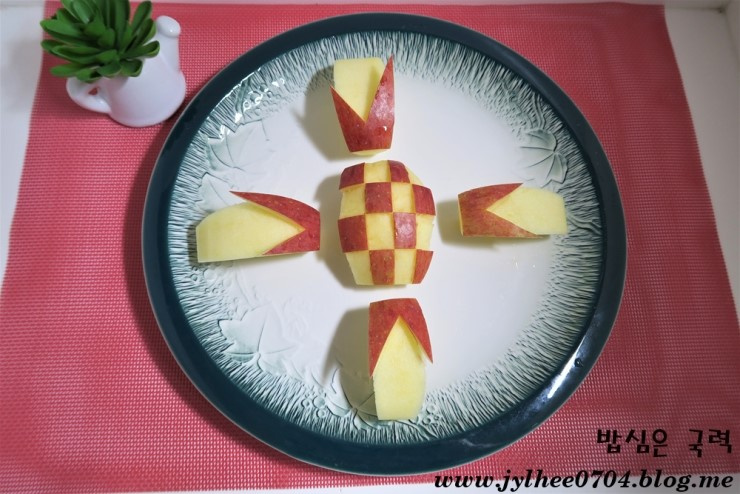Apple
Beautifully Cut Apple Wedges with a Checkerboard Pattern

Hello there! As they say, ‘rice is strength.’ Apples are not only rich in pectin, a type of dietary fiber, but also packed with organic acids like citric acid and essential minerals like potassium. They offer numerous health benefits, including antioxidant properties and fatigue recovery. Potassium helps excrete sodium, making it beneficial for managing high blood pressure. Eating an apple before a meal can also aid in weight management by promoting a feeling of fullness. Today, we’ll learn how to create an aesthetically pleasing apple presentation: the ‘checkerboard pattern apple slices.’ Even just one or two of these beautifully presented pieces can elevate the appearance of any fruit platter. Let’s get started!
Ingredients- 1 Apple
Cooking Instructions
Step 1
First, since we’ll be eating the apple with its peel, it’s crucial to wash it thoroughly using baking soda. Make sure to scrub it meticulously.

Step 2
Begin by cutting the washed apple in half. Be careful to avoid any slipping.

Step 3
Cut each half in two again, resulting in quarter wedges. To prevent the apple from rolling, make a small, flat cut along the core section. This creates a stable base for the next steps.

Step 4
Now, turn the apple wedge over and place it flat side down on the cutting board. This stabilizes the piece. With the apple in this position, carefully trim off both outer ends. Removing these ends will help create a neater, more defined square shape later on.

Step 5
Next, make evenly spaced vertical cuts into the apple wedge. Aim for about 4 equal sections. Consistency in spacing is key here.

Step 6
Then, make similar evenly spaced horizontal cuts, again dividing it into approximately 4 sections. Essentially, you’re creating a grid of cuts across the apple’s surface. Uniform spacing will ensure a beautiful final pattern.

Step 7
Now it’s time to create the checkerboard pattern. Examine the cut apple wedges and, following the lines you’ve made, gently peel away strips of the skin. Using a small paring knife or a specialized fruit peeler will make this process much easier. If using a standard knife, ensure it’s sharp for a clean cut, and be mindful of your pressure to only remove the peel without cutting too deeply into the flesh. Aim for shallow, delicate cuts to create the textured effect.



